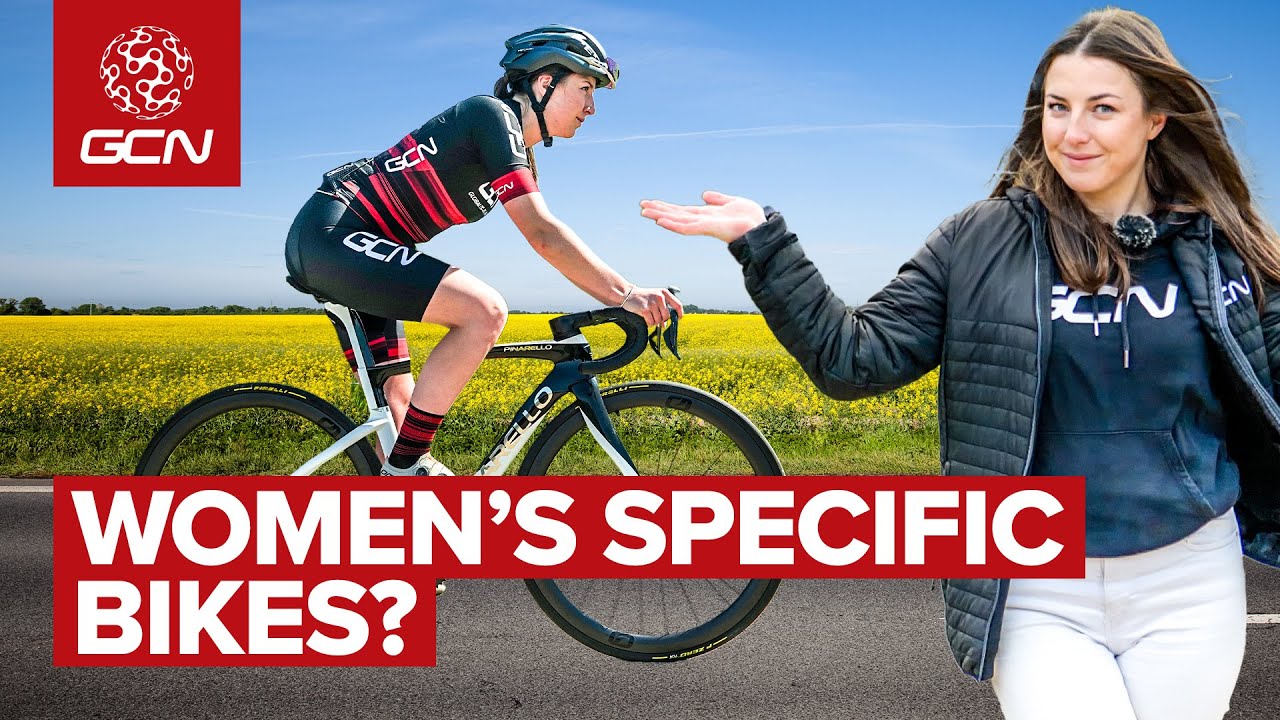Women’s Bikes: Waste Of Time Or Game Changers? with GCN
Source: GCN Youtube Channel: Women’s Bikes: Waste Of Time Or Game Changers?
Video Women’s Bikes: Waste Of Time Or Game Changers? with Global Cycling Network
Video Women’s Bikes: Waste Of Time Or Game Changers? with Global Cycling Network YouTube Channel.
Women’s Bikes: Waste Of Time Or Game Changers?
Do Women-Specific Bikes Make Cyclists Faster and More Comfortable?
Introduction
Cycling has historically been dominated by men, with bikes being designed as one-size-fits-all for the male population. However, in recent years, there has been a growing demand for women-specific bikes. The question remains, do we need women-specific bikes, and would they make cyclists faster and more comfortable? To find out more about this topic, I explored the perspectives of industry experts and bike shop owners. In this article, we will delve into the nuances of women-specific bikes, the design considerations, and the demand for them in the cycling world.
Understanding Women-Specific Bikes
When it comes to defining women-specific bikes, Tom Sturdy, an expert in sports biomechanics and frame building, sheds light on the historical context. He explains that women-specific bikes were traditionally designed as shrunken-down versions of men’s bikes, simply meant for a smaller-sized rider. However, as the demand for women’s bikes has grown, bike manufacturers are making efforts to address this more specifically. This is evident in the example of Liv, a company that has produced a very specific brand to cater to women’s cycling needs.
From a bike design perspective, the key consideration for women-specific bikes is the size of the bike relative to the size of the wheels. In the context of women’s bikes, the top tube, specifically the sloping design, has been a defining feature. Historically, the dropped top tube was meant to accommodate women riding in skirts. However, the modern approach to women’s bike design goes beyond the top tube, taking into account factors such as saddle, handlebars, cranks, and overall weight distribution.
Furthermore, Tom emphasizes the importance of ensuring a correctly fitting bike for women, highlighting the need for a shorter bike that does not compromise the stack height. This becomes crucial in addressing common issues such as lack of confidence in descending, typically reported by female riders. Here, the discussion expands to include the significance of crank length and how it can impact a rider’s performance and comfort.
Insights from a Bike Shop
Kate Hoy, the owner of Pronto Bike Shop, provides insights into the demand for women-specific bikes in the market. Contrary to the common perception, Kate mentions that while her shop does not sell specific bikes for women, a significant portion of their bike sales are to women. She indicates that their female customers are more concerned about finding a bike that fits their needs rather than specifically seeking out women-specific bikes. She notes that most women seek guidance based on the intended use of the bike, their budget, and the overall fit, rather than focusing on the gender-specific aspect of the bike.
In response to the question of whether bike manufacturers realize the demand for women in cycling, Kate shares her efforts in promoting the understanding that women are also a significant consumer base in the cycling industry. She emphasizes the need for bike brands to cater to women’s cycling needs, not just in terms of bikes but also in clothing and accessories. Kate’s experience in the bike shop challenges the notion of exclusively gender-specific bikes and highlights the importance of a personalized approach to finding the right bike for each individual customer.
Insights from Canyon
I also reached out to Canyon, a leading brand in the cycling industry, to understand their approach to women-specific bikes. While Canyon does not design bikes specifically for women, they emphasize that their bikes are intended for all types of riders, regardless of gender. They collaborate with their women’s Canyon Sram racing team to align their bikes with the needs of female riders. Additionally, Canyon incorporates smaller 650b wheels with smaller frame sizes to optimize riding performance and handling for female riders, echoing the importance of size-specific considerations.
Canyon’s approach reflects an inclusive design philosophy that caters to the diverse needs of all riders. Their wide range of sizes, from 3XS to 2XL, indicates a commitment to providing options that accommodate a broad spectrum of riders, rather than confining them to gender-specific categories.
Conclusion
The exploration of women-specific bikes and their impact on cyclists’ performance and comfort reveals the complexities and nuances of this topic. The insights from industry experts, bike shop owners, and leading bike brands paint a multifaceted picture of the evolving landscape of women in cycling.
Ultimately, the discussion challenges the traditional gender-based approach to bike design and highlights the need for a more personalized and inclusive perspective. As the demand for women-specific bikes continues to grow, it becomes imperative for the cycling industry to recognize and address the diverse needs of all riders, regardless of gender. The future of women in cycling lies in embracing a holistic approach that prioritizes individual fit, performance, and comfort, transcending gender-specific stereotypes.
The opinions expressed in this space are the sole responsibility of the YouTube Channel Global Cycling Network and do not necessarily represent the views of CicloNews.










